Olive Oil from Spain vs. Italy: What’s the Difference?
Spain and Italy are both world-renowned for their high-quality olive oils. That said, there are distinct differences between the two.
For instance, Spanish olive oil is known for its fruity and robust flavor. Genuine Italian olive oil, on the other hand, is lighter with a delicate taste.
After living in Spain, I’ve used Spanish olive oil exclusively for years. However, a trip to Italy sparked my curiosity over the differences between the world’s biggest olive oil producers. So, I decided to research Spanish vs. Italian olive oil to help you understand the difference.
This guide on olive oil from Spain vs Italy will tell you everything you need to know—whether you’re looking for a finishing oil for your salad or the best type of olive oil to cook with (or just curious)!
What’s the Difference Between Olive Oil from Spain vs. Italy?
Spanish and Italian olive oils each have unique flavor profiles. This is mostly due to olive variety and production methods.
Spanish olive oil is robust, bold, and fruity. Traditional production methods are prevalent in Spain, which often lend to a slightly bitter taste.
In contrast, Italian olive oil is mild and delicate with a nuanced buttery and grassy flavor. This flavor reflects the country’s meticulous attention to detail in the oil extraction process.
With this in mind, Spanish oil is a good oil for everyday use. It’s excellent for cooking at high temperatures, whereas Italy’s oil is a great finishing oil. There’s hardly anything better than drizzling, dipping, or topping with premium extra virgin olive oil from Italy!
Understanding Olive Oil: Color, Flavor, and Aroma
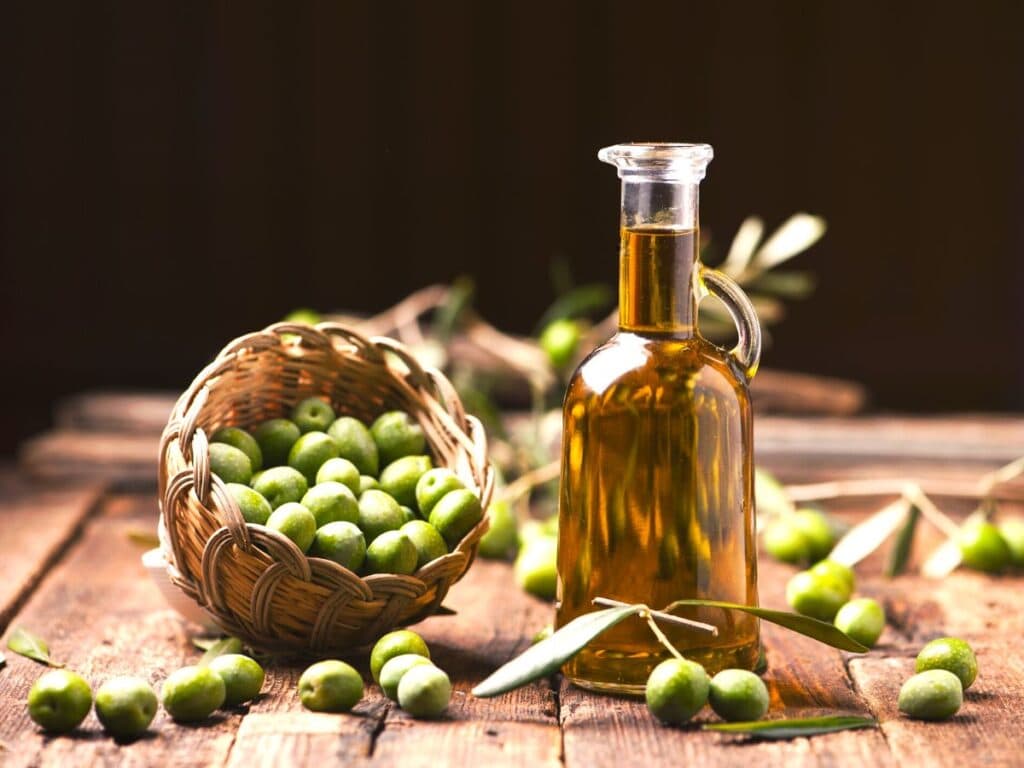
One of the most versatile oils in the world, olive oil is a staple ingredient in Mediterranean cuisine. You see so much olive oil (and table olives) when traveling there!
It’s on every table, whether it’s in a bowl, drizzled over your meal, or incorporated into your dish.
I became quite a fan when I was living in Spain! I even love olive oil for breakfast, drizzled over tostada (Spanish toast).
So, what sets oil from Spain and oil from Italy apart? Color, flavor, and aroma, for starters.
Color
Olive oil bottles are deceiving. From green and brown to gold or clear, what color is olive oil anyway?
In reality, the color spectrum of olive oil ranges from pale gold to a deep, darker green. Factors like olive variety, harvest time, and region all influence the color.
Both Spanish and Italian oils can exhibit a bright green hue when fresh, but they usually age to a golden yellow.
To sum up, the color of olive oil isn’t about aesthetics. And, it doesn’t stack one oil against the other in terms of which oil is best.
However, don’t totally disregard the color of the bottle! It’s best to pick a darker bottle to extend the shelf life of your oil.
Flavor and Aroma
Now, let’s talk about what really matters in olive oil—its flavor and aroma.
If you’re a Spain enthusiast (like me), you know that Spanish olive oils are bold and robust. They have fruity notes and a grassy aroma. They also leave a distinct, slightly bitter aftertaste, a signature of their quality.
It’s the kind of flavor that can transform a simple dish into something extraordinary—a hallmark of Spanish cuisine.
Italian oils, in contrast, are more subtle. They are typically lighter, with a smooth, buttery taste and grassy notes. These oils are the secret behind the delicate flavors in Italian cuisine. They’re perfect for dishes where you want the oil to complement, not dominate, the flavors.
Like color, several factors influence olive oils’ flavor and aroma. These include olive variety, ripeness, and processing methods.
In any case, these high-quality olive oils contribute to these countries’ amazing cuisine!
Next, we’ll delve into the differences in production methods between Spain and Italy. You’ll discover how these techniques contribute to the unique qualities of each oil.
Differences between Spanish and Italian Olive Oil Production
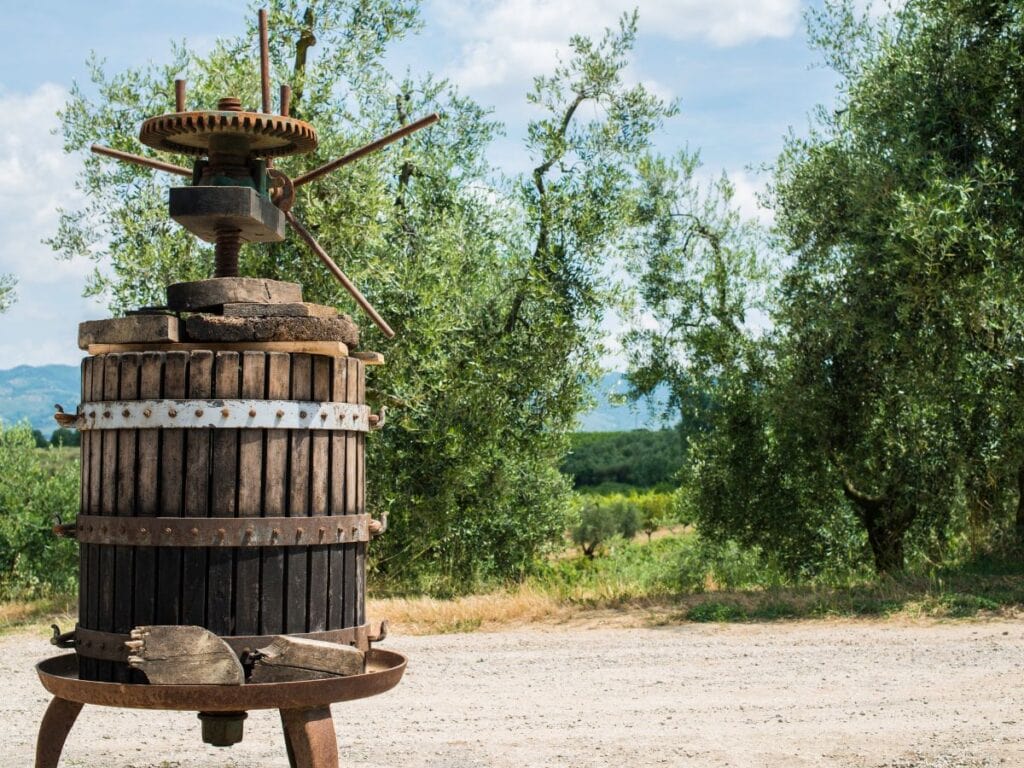
Have you ever wondered how olive oil is actually made? Well, with over 8 million tons of olive oil produced annually, Spain and Italy are a good place to find out! Plus, it turns out, the production process is as rich and varied as the oils themselves.
Let’s take a peek into how Spanish and Italian olive oils are crafted—trust me, it’s quite the journey from tree to table!
Spanish Olive Oil Production
In Spain, the production of olive oil is an art form, perfected over centuries. Picture this: sun-drenched olive groves with olives being handpicked with care. It’s a traditional scene that still exists in many parts of Spain.
That’s where my love affair with Spanish olive oil began. I was on a road trip through Andalucia in my early 20s. It was the first time I’d ever seen olive trees, let alone grove after grove!
But, let’s get back to the production of olive oil in Spain.
After harvest, olives are crushed into a paste using age-old methods like granite stone mills. The olive oil paste is then pressed to extract the oil.
This traditional approach retains the full flavor and aroma of the olives. It makes Spanish virgin olive oil truly exceptional!
But don’t be fooled, Spain is also at the forefront of innovation.
Modern Spanish olive oil suppliers employ new techniques to meet rising international demand. They use everything from mechanical harvesters to sophisticated centrifuges. This, while ensuring they remain the largest producer of olive oil globally.
It’s a perfect blend of old and new, and the result? Perhaps the world’s finest olive oil.
Italian Olive Oil Production
The world’s second largest olive oil producer, regional differences mark Italy’s olive oil production.
Each area, from the rolling hills of Northern Italy to the sun-kissed fields in Southern Italy, has its own, unique methods. Italian extra virgin olive oils are the product of this diversity.
But what sets Italian production apart is the meticulous attention to detail.
Italian producers use modern technology and machinery. But, the process is governed by strict regulations to ensure only the best quality on our tables.
The olives are washed, crushed, and meticulously pressed using a centrifuge. This process yields oil that’s renowned worldwide for its subtlety and flavor.
To sum up, both Spain and Italy produce high-quality olive oil that is sought after around the world. However, the difference in production methods is not only about technique. It’s about capturing the spirit of each country!
Next, learn about traditional vs. modern techniques and how they shape the taste of the olive oil we all love.
Olive Oil Production Methods: Traditional vs Modern

As for olive oil production, I find this part absolutely fascinating. The process is not solely about extracting oil. It’s about preserving a legacy while producing for the masses.
These production techniques are essential for understanding the distinct properties of Spanish and Italian olive oils.
Traditional Olive Oil Production
In Spain, the traditional method is like a scene from a historical novel. 😂
Olives are handpicked with care, echoing centuries-old practices. These olives are taken to mills, crushed into a paste, and spread onto mats. The paste is then spread onto mats, which are stacked and pressed to extract the oil.
This approach is labor-intensive, yes. But it preserves the olive’s rich fruity taste and herbal aroma. The result is “virgin” or “extra-virgin,” depending on the acidity and other factors.
In Italy, traditional olive oil production methods have a similar approach. In the central region, especially, the olives are handpicked and stone-milled.
This method yields oil that’s not just a cooking ingredient but a delight for the senses!
Modern Olive Oil Production
In Spain, as the largest olive oil producer in the world, there’s a need to keep up with both quality and quantity. Modern machinery (mechanical harvesters and centrifuges) streamline the production process.
These methods lack the romanticism of traditional methods. But, they’ve adapted to the times while still producing great olive oils. These methods can result in a lower quality oil known as “refined” or “pomace” oil. This oil is often used in commercial food production.
Italy’s modern approach is more sophisticated than Spain’s.
Italian olive oil producers focus on elevating the quality of the oil. Temperature control, meticulous filtration, and refinement define modern Italian olive oil production.
The result? Higher quality Italian oils with a longer shelf life. You’ll often see these Italian EVOOs labeled as “cold-pressed” or “first cold-pressed.”
Both countries have found a way to marry tradition with innovation. Whether it’s the traditional charm of Spanish mills or the precision-driven Italian modern methods, this is certain.
Terroir and Climate’s Influence on Spain & Italy’s Olive Oil Characteristics

Terroir and climate play a critical role in defining the character of these authentic olive oils. I learned this while I was spending time in the Mediterranean. Let’s see how.
The Impact of Terroir on Olive Oil
Terroir is a French term that’s often used in the wine industry. But, it’s just as relevant when talking about olive oil.
It refers to the environmental conditions—soil, topography, altitude, and climate—in which olives are grown. It means that every olive grove contributes to the distinct properties of the oil it yields.
Spanish Terroir: Spain’s landscapes can be chalky, full of limestone, sandy, or clay-like. Whatever the case, they influence the fruitiness, bitterness, and pungency of the oil. In other words, Spanish olive varieties like Hojiblanca reflect the land where they’re cultivated.
Italian Terroir: In Italy, the terroir is equally influential, yet more homogenous. This contributes to the consistent flavor of its olive oil. Yet certain regions have more distinct tastes and aromas. For example, Tuscan oils have a peppery kick, a result of the region’s unique terroir.
Climate’s Role in Olive Oil Production
The Mediterranean climate of both Spain and Italy (dry, hot summers and mild, wet winters) is ideal for olive cultivation. However, climate differences in the two countries affect their respective olive oils.
Spanish Climate: Overall, the climate is more arid than in Italy. This results in trees that produce smaller fruit with a higher concentration of oil. The also climate varies from region to region. Southern Spain, with it’s hot and dry conditions, produces robust and intense oils. On the other hand, the cooler, more temperate climate of the north yields milder oils.
Italian Climate: Italy, with its varied microclimates, sees a similar effect. The coastal regions produce olive oils that are typically lighter. The inland areas, with their colder winters and hotter summers, produce oils that are richer and more complex. In contrast to Spain, Italian olive trees produce larger fruit.
As you can see, it’s not only about the Spanish olives or their Italian counterparts. It’s about where and how they grow.
Exploring Olive Varieties: Spanish vs Italian
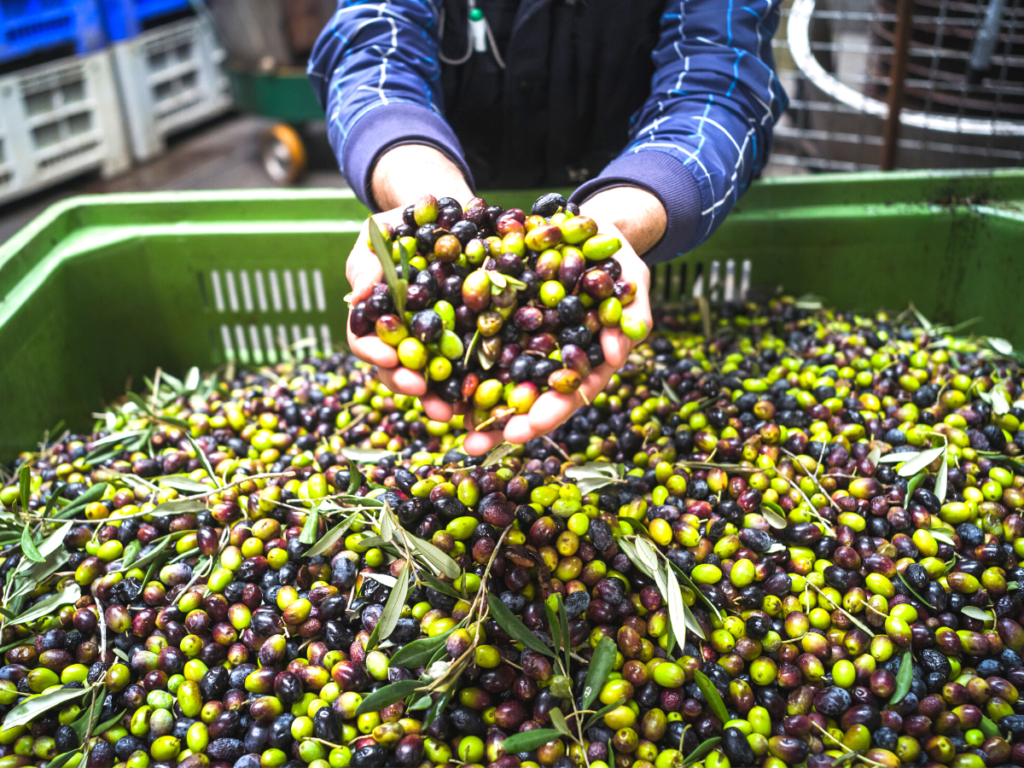
Spain and Italy are home to a vast range of olive varieties. Each offers characteristics that contribute to oil’s distinct flavor profiles and culinary uses. Understanding the different olive varieties will help you choose if Spanish or Italian olive oil is best for you.
Popular Spanish Olive Varieties
As you can imagine, the largest producer of olive oil in the world boasts a wide array of olives.
Here are some of the best:
- Arbequina: A small olive with a delicate, fruity flavor. The flavor is good for dressings and light sautéing.
- Picual: A robust olive with a slightly bitter taste, best used in bold dishes.
- Manzanilla: A large, round olive with a mild, nutty flavor. Makes the best all-around oil.
Popular Italian Olive Varieties
Italian olives are diverse, with each region boasting its own signature varieties.
Here are a few Italian olives to look for:
- Frantoio: A medium-sized olive with a slightly bitter taste. Commonly used in Tuscan cuisine.
- Leccino: A small olive with a sweet, buttery flavor often used in olive oil blends. Good for dishes where you want a subtle flavor.
- Moraiolo: Bold and spicy, making it ideal for dishes that can handle a bit of heat.
Next, we’ll discuss more about cooking with olive oil to help you decide which to buy.
Which Olive Oil is Best for Cooking: Spain or Italy?

Countless recipes use olive oil—Spanish food, Italian food, or any other cuisine. This section will teach you how to choose between Spanish or Italian oil for cooking.
Spanish Extra Virgin Olive Oil: Bold and Versatile
Spanish extra-virgin olive oil is incredibly versatile in the kitchen. It’s rich, fruity-nutty and aromatic.
Here are some ways to use Spanish olive oil:
- Sautéing and Frying: Its robust flavor makes it perfect for sautéing vegetables or frying meats. It adds depth and character to the dish.
- Marinades and Dressings: The bold flavor of Spanish oil stands up to acidic ingredients like vinegar and lemon. This makes it ideal for marinades and dressings.
- Baking: Believe it or not, Spanish olive oil can be a fantastic substitute for butter in baking! It adds a unique twist to cakes and bread.
Italian Olive Oil: Delicate and Refined
Italian olive oil, often light and delicate, is ideal for dishes requiring a subtle touch.
Here’s how to use it:
- Finishing Oil: Drizzle it over pasta, pizza, or salads for an instant flavor boost. It enhances the dish without overpowering it.
- Dipping: Pair it with balsamic vinegar and freshly baked bread for a simple, yet delicious, appetizer.
- Baking: Italian olive oil is great for baking when a lighter, more nuanced flavor is desired.
After learning about cooking with Spanish olive oil, I realized that must be one of the factors why I prefer it! I use it mostly for sautéing or in marinades. I don’t typically drizzle or dip!
What about you?
Availability and Price in the USA: What to Expect
First, the good news: both Spanish and Italian olive oils are widely available in the United States.
The best way to find them is to head to your local grocery stores, or specialty food shop, or search online. Since good quality olive oils are easily obtainable, you can pick one based on your personal preferences.
When it comes to price point, there’s quite a range, and several factors play into this.
Here’s what I’ve observed:
Spanish Olive Oils: Spanish oils often offer competitive pricing. As the world’s largest producer, Spain’s olive oil industry benefits from economies of scale. As a result, prices are more affordable for consumers.
Italian Olive Oils: Generally, Italian olive oils are priced higher. This can be attributed to several factors. These include the perception of Italian oil as a premium product, smaller production scales, and higher labor costs.
It’s also important to read labels carefully. Fortunately, now that you’ve read this guide to Spanish vs. Italian olive oil, you know what to look for!
Here are few other important things to note when shopping for olive oil:
- Look for phrases like “extra virgin” for the highest quality oils.
- Check the back of the bottle for the harvest date to ensure you’re getting the freshest olive oil possible.
- Be aware of phrases like “packed in Italy” or “bottled in Spain.” They might not indicate the actual origin of the oil. (Although per COOL, they should list the country of origin—for example, ES for Spain and IT for Italy).
Do both Spanish and Italian olive oils have their place in your kitchen? Perhaps the best olive oil for you depends on availability, cooking needs, and budget.
Is Spanish or Italian Olive Oil Healthier?
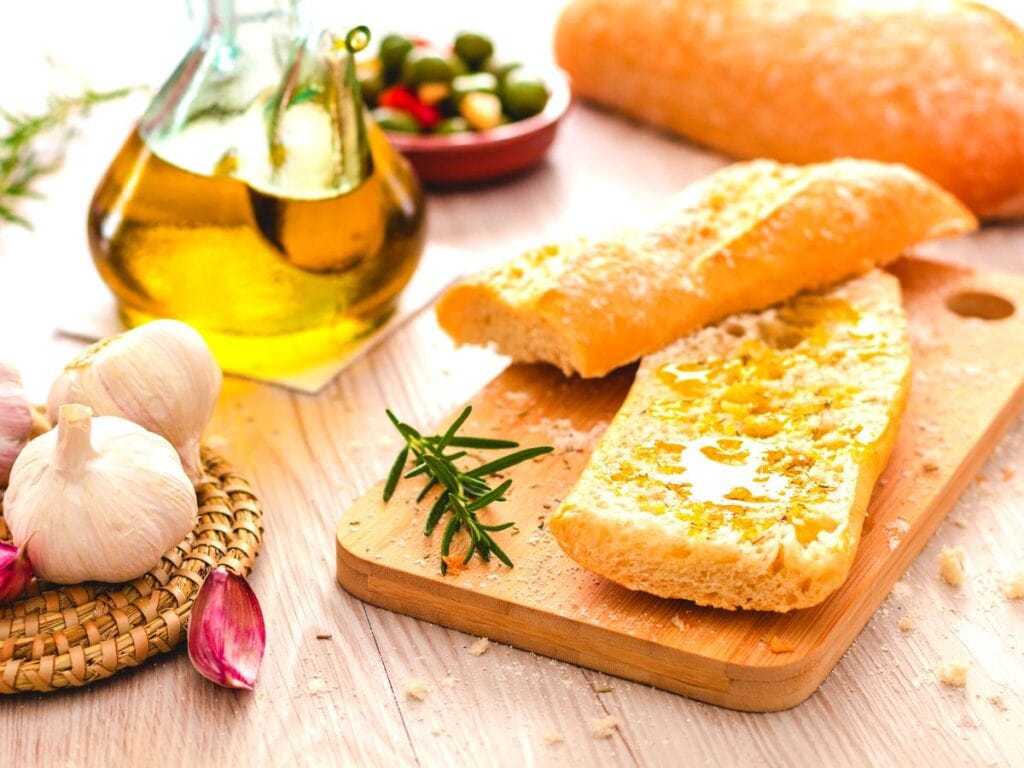
You may have heard that olive oil, a staple of the Mediterranean diet, has certain health benefits. Both Spanish and Italian olive oils offer these benefits, so there’s no clear winner here!
Here are three key health benefits of olive oil:
Heart Health: Olive oil is rich in monounsaturated fats. Known to promote heart health, regular consumption can help manage cholesterol levels.
Anti-Inflammatory Properties: The polyphenols in olive oil have anti-inflammatory effects. These are beneficial in reducing the risk of chronic diseases and conditions like arthritis.
Antioxidant-Rich: Olive oils are loaded with antioxidants. Antioxidants combat oxidative stress and can play a role in cancer prevention.
To maximize these health benefits, opt for extra virgin varieties, as they undergo minimal processing and retain most of their natural nutrients. Whether you choose Spanish or Italian, incorporating olive oil into your diet is a tasty way to boost your health according to this study.
Which is Better: Olive Oil in Spain vs Italy?
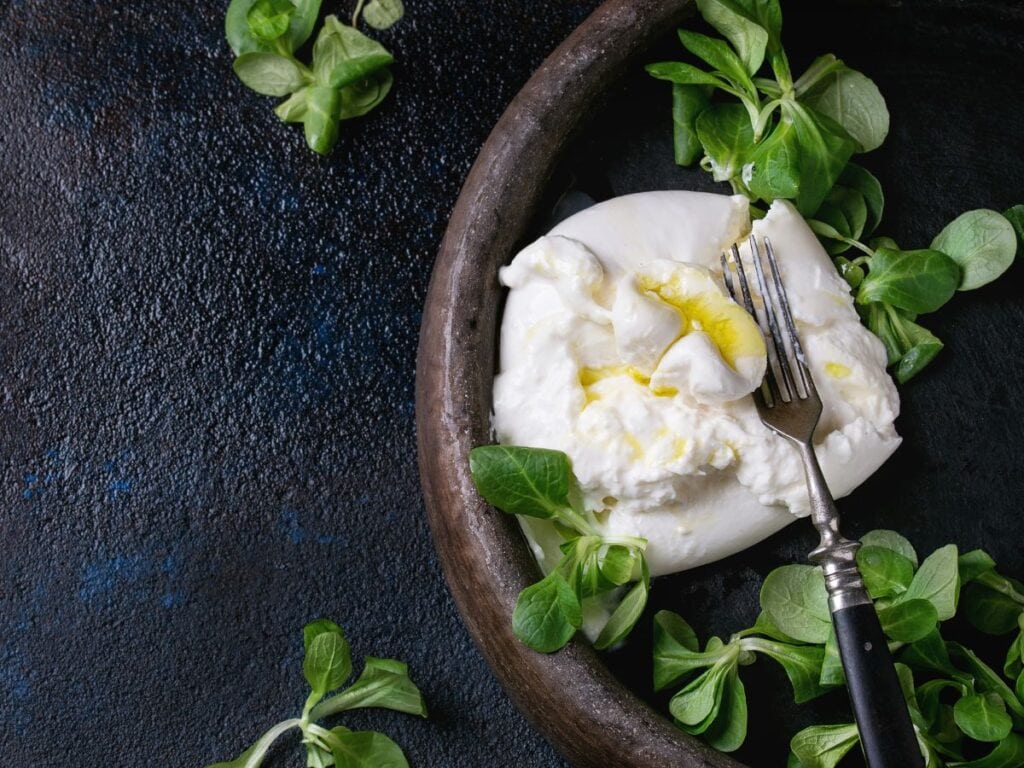
In both Spain and Italy, olive oil isn’t just a cooking ingredient—it’s a cultural icon!
As for which is better, Spanish or Italian olive oil, that ultimately comes down to personal preference and intended use.
Spanish olive oil, known for its bold, fruity flavors, is ideal for those who enjoy a robust taste and is excellent for cooking at high temperatures.
Italian olive oil, with its delicate, buttery notes, suits those who prefer a milder taste and is perfect as a finishing oil for dishes.
Both varieties offer exceptional quality and health benefits, No matter which you choose, you’re in for a treat!
Although you know my preference! 😉💛❤
Blogs on Spanish Culture
Want to learn more about Spanish culture? Read these posts:

